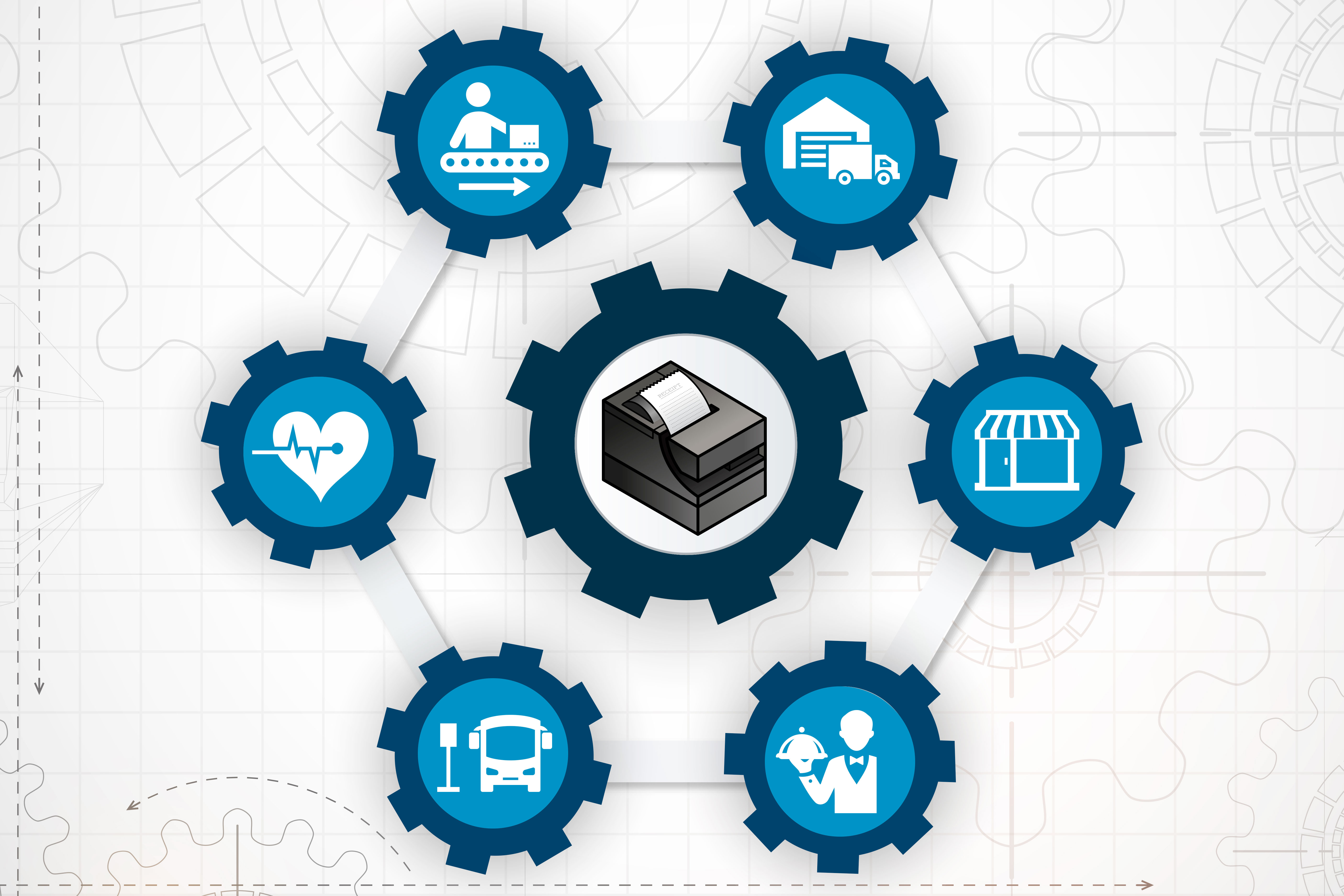
With a vast selection of enterprise printers and brands available in the marketplace, choosing the right printer for your business can be a daunting task. But it doesn’t have to be. The decision-making process can be simplified through careful evaluation of your deployment environment and a basic understanding of your printing needs. In this post, we are going to walk through five key considerations that will help to prepare you for your next printer purchase.
What is the environment of printer application and the deployment?
One of the first steps in correctly identifying your next printer is to assess where it is going to be used. Start broadly by pinpointing the vertical market. For example, is the printer going to be used in a manufacturing, warehousing, medical, transportation, hospitality, or retail application? Perhaps it is for route accounting or field service where employees will need to carry the printer with them. It is important to identify the application because it will guide you toward a printer category—stationary, desktop, commercial, portable printers—as a starting point in the selection process.
Using this information, your next task is to further characterize the deployment environment. The degree of printer ruggedness and durability usually come into play here. If the printer is being used in a warehouse with lots of equipment and moving objects, you may require a rugged device that can withstand drops and hits. If it is for a commercial application, for instance, a rugged printer may be overkill and a durable printer may be a more suitable option. The objective in this step is to have a clear idea of where and how the printer is going to be used.
What media size do you need?
In this step, you want to determine the label size(s) that you use in your operations. Every printer has a maximum media width, which dictates the size of the label that can be printed. The media range for mobile printers is usually between 2” – 4”. Commercial printers usually range from 4” – 6”. Industrial printers often range from 4” – 8”. Be sure to complete this step because you do not want to get stuck with a printer that isn’t capable of printing the label size that you need.
What are your performance expectations?
When we say performance, we are referring to the printer’s output. Printers are machines and they can only produce a certain amount of labels per day. The goal in this step is to determine the volume of labels that you require in a typical workday. You can start by calculating the average to come up with this figure. Most printers will specify a volume output range (e.g. between 5,000-10,000 labels per day). Look for a printer where your average volume falls somewhere in the middle of the printer’s range. That way, on days when volume is higher than average, the printer output can adjust upward to still meet your performance expectations.
What print resolution do you need?
The best way to answer this is to review the information printed on your labels. Do you print graphics or images? Do you print logos? Do you print small or large texts? The more detailed the information is on your labels, the more clarity you will require. The printer’s resolution, represented in dots per inch (dpi), determines how clear the information appears on the label. The dpi typically ranges from 203 to 600. For most labels, 203 dpi is sufficient. However, higher print resolution may be needed if graphics, logos, or small texts are printed on your labels. Additionally, a trade-off to keep in mind is that as the print resolution increases, the print speed decreases.
What connectivity is required?
As technology evolves so too do the options for printer interfaces. The main interface options available today include: parallel, serial, USB, Ethernet, Bluetooth and wireless. The first two are older technologies that are being gradually phased out and replaced by the latter ones. The solution you choose depends on multiple factors including the size and distance of your network as well as the desired data transfer rate.
Answering these five fundamental questions will help to prepare you in your search for a new enterprise printer. Some other points to consider in your shopping endeavors include: print speed, print needs specific to your business, and budget. You may also want to work with an expert who can offer advice and guide you through the decision-making process. The more you can identify your business’s needs and preferences, the closer you will be to finding a printer that satisfies them.
Co-contributor: Angela Feeney

